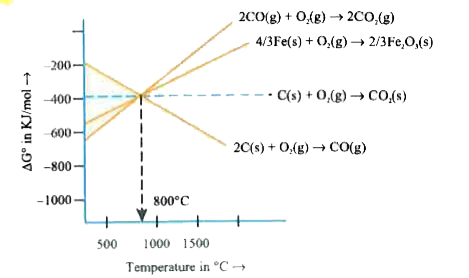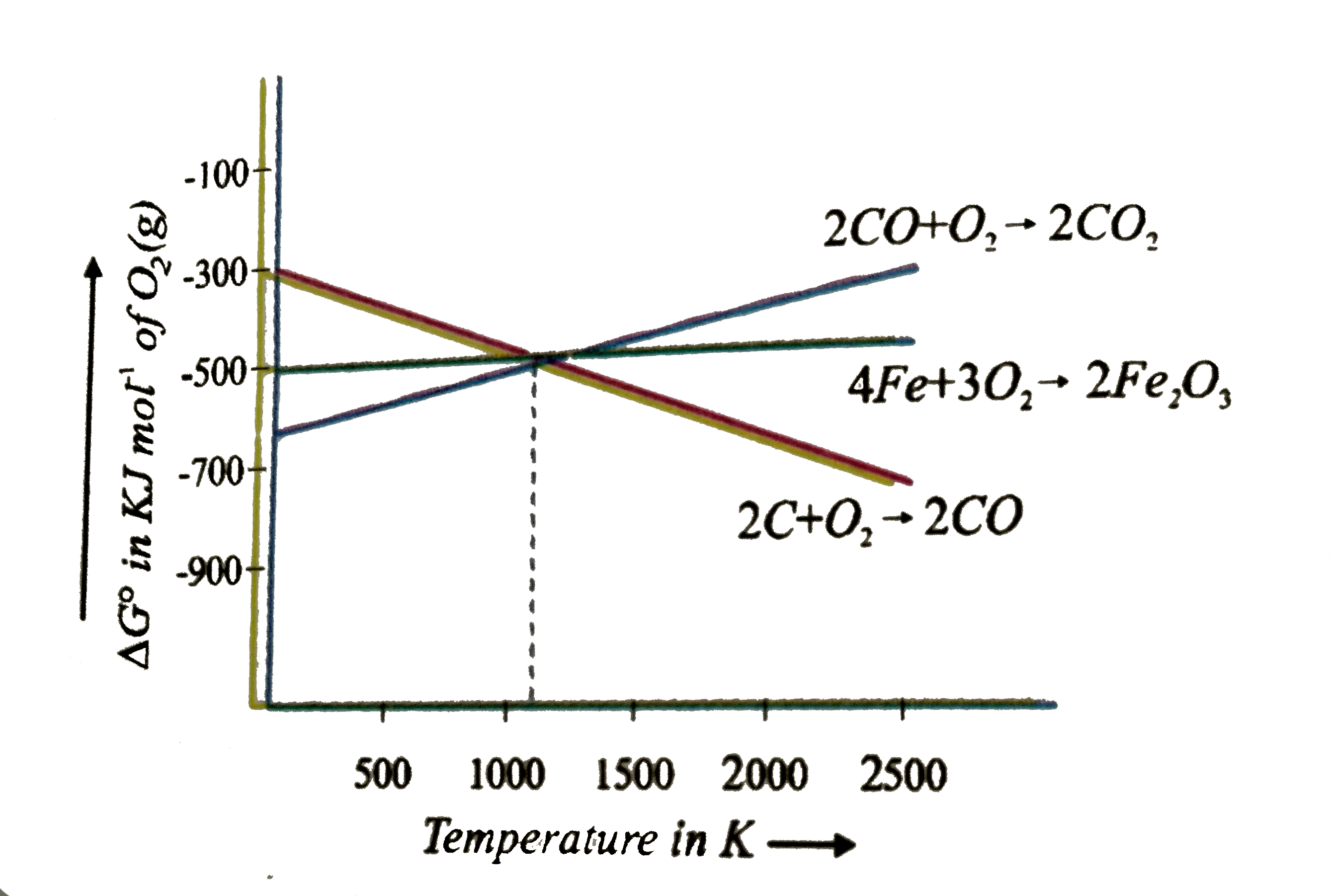(A): At 1200K iron can be reduce cuprous oxide
(R )L: At 1200K, Fe+Cu2O→FeO+2Cu
ΔG=−300kj/mole
If both (A) and (R ) are correct and (R ) is the correct explantion of (A )
If both (A) and (R ) are correct and (R ) is not the correct explantion of (A )
If (A) is correct but (R ) is incorrect
If (A) is incorrect but (R ) is correct
The correct Answer is:A
Step by step video, text & image solution for (A): At 1200K iron can be reduce cuprous oxide (R )L: At 1200K, Fe+Cu_(2)O to FeO+2Cu DeltaG=-300kj//"mole" by Chemistry experts to help you in doubts & scoring excellent marks in Class 12 exams.
Similar Questions
Knowledge Check
- Question 1 - Select One
In pyro metallurgy the metals are extracted from ores and concentrates by heat treatment. This involves conversion to metal oxide. This is followed by the reduction of the oxide to the metal using carbon or carbon monoxide.
4Cr(s)+3O2(g)→4Cr2O3(s),
ΔG∘=1500kJ/mol at1200∘C
2Mn(s)+O2(g)→2MnO(s),
ΔG∘=−600kJ/mol at1200∘C
2C(s)+O2(g)→2CO(g),
ΔG∘=−550kJ/mol at1200∘CAC(s) can reduce MnO(s) under given conditionBC(s) can reduce Cr_(2)O_(3)(s) under given condition0CNeither MnO(s) nor Cr2O3(s) be reduced by C(s) under given conditionDBoth will be reduced simultaneously if carbon is passed over a mixture MnO(s)andCr2O3(s). - Question 2 - Select One
Correct statements form the graph

I) Above 1073K, ΔG0 for the formation of Fe2O3 is less negative than ΔG0 for the formation of CO from carbon
II) Above 1073K, Carbon can reduce Fe2O3
III) Below 1073K, CO can reduce Fe2O3
IV) In blast furnace, reduction of Fe2O3 occurs in different temperature ranges with below 1073K by CO (or) above 1073K by carbonAOnly IBI, II onlyCI, II, III onlyDAll - Question 3 - Select One
Correct statements from the graph

I) Above 1073 K,ΔG0 for the formation of F2O3 is less negative than ΔG0 for the formation of CO from carbon
II) Above 1073K, Carbon can reduce Fe2O3
III) Below 1073K, CO can reduce Fe2O3
IV) In blast furnance, reduction of Fe2CO3 occurs in different temperature ranges with below 1073K by CO (or) above 1073 K by carbonAOnly IBI,II onlyCI,II,III onlyDAll
For the equilibrium:
CO(g)+H2O(g)⇔CO2(g)+H2(g) the standard enthalpy and entropy changes at 300K and 1200K for the forward reaction are as follows:
(ΔH∘300K=−41.16kJmol−1,),(ΔS∘300K=−0.0424kJmol−1),(ΔH∘1200K=−32.93kJmol−1,),(ΔS∘1200K=−0.0296kJmol−1)
In which direction will the reaction be spontaneous?
(a) At 300K,
(b) At 1200K, when at equilibrium PCO=PCO2=PH2=PH2O=1atm
Also calculate Kp for the reaction at each temperature.View SolutionCu can reduce Ag+ to metallic Ag but Ag can can't reduce CU2+ to metallic Cu. Explain
View SolutionCu can reduce Ag+ to metallic Ag but Ag can can't reduce CU2+ to metallic Cu. Explain
View SolutionIdentify the redox & non redox reaction
Cu2S+2FeO→2Cu+2Fe+SO2View SolutionReduction of Fe2O3 with CO is done below 710∘C.
ΔfGӨ is negative at this temperature , this process is spontaneous.View Solution

